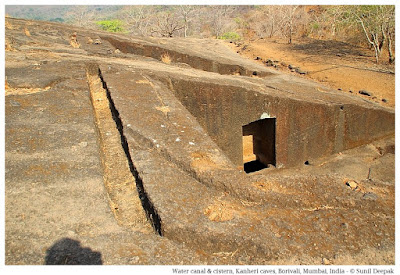Ushimado and the legend of Ushi-oni
There is a legend of a monster called Ushi-oni, who looked like a cow. Empress Jingu came here disguised as a man after her husband died. She met the monster and killed it. Different parts of Ushi-oni fell in the sea around Ushimado forming the different islands. The original name of Ushimado was Ushimaro - Ushi (cow) + Maro (killed). This legend is celebrated in the Ushimado shrine in the city.
During the Edo Period (1603-1868), Ushimado was a ship-building town and was used as a resting point by Korean Royals on their way to Edo.
Reaching Ushimado
Ushimado comes under Setouchi in the Okayama prefacture. It is about 30 km from Okayama. You can take an Ako line train from Okayama, get down at Saidaiji or Osafune and then take a Ryobi bus to Ushimado.
At Ushimado, I stayed at hotel Limani. Looking out at the beautiful islands and the sea was an incredible wake-up experience, as you can see from the image below.
At Ushimado, I stayed at hotel Limani. Looking out at the beautiful islands and the sea was an incredible wake-up experience, as you can see from the image below.
Ushimado Lighthouse
One early morning I explored the main street of Ushimado called Shiomachi Karakoto. The Kaiyu museum was closed but just behind it, I found an ancient temple - Honrenji. It was built for welcoming the Korean visitors and is considered a cultural heritage site.
Majority of temple structures were in wood. The buildings had huge curved roofs, almost as big as the rooms below. To the right, stairs led to a terrace overlooking the sea with some more temples.
This is a Shinto shrine at the top of the hill above HonRenJi temple. It is dedicated to Tenjin, the god of scholarship.
Long stairs along with a Koromon gate led to the shrine. The main temple was closed. On the left, there were Inari shrines marked by vermilion coloured Torii gates. One Inari shrine was full of Kitsune (white foxes), the messengers to the god Inari. Inari gods are linked with rice-crop and fertility. Kitsune were shown with their right front paw raised up to protect an urn, and each had a golden round tablet in the mouth.
Kompira-Gu Kou Shrine
This was another Shinto shrine at the top of a hillock. Kompira-gu is a god of the sailors. Kompira shrines were originally made by Shugendo sect in Kotohira mountains of the Kagawa prefacture and are also called Kotohira-gu. Outside its closed latticed doors there were banners of rope and straw.
Sai Ichi Inari
This Inari shrine was on the main street of Ushimado, behind a house, where a row of vermilion Torii led to small shrine. Praying to this Inari was supposed to grant you a long and happy life. A holy person from Fushimi Inari in Kyoto had established this shrine in Ushimado.
One evening while walking to the back of the hill of the Tenjin shrine, I came across another Buddhist shrine linked to a cemetery. This shrine had seven carved stones, all wrapped in red wool-covers. The central stone had a bigger statue of Buddha. Behind the Buddha stones, there were seven round stones.
Conclusions
Today most cities of Japan look very European. However, Ushimodo has still many places where you can see the old Japan and its traditions. For example, the image below shows an old well of Ushimado and a couple of shrines close to it.
I could not visit many tourist places in Ushimado such as the Kaiyu cultural museum, Maejima island (Green island) and the Olive Gardens. However, this visit gave me an opportunity to see and appreciate the traditional Japanese houses and some of their traditional temples and shrines. At the same time, it was a beautiful place with incredible sunsets.
***





































